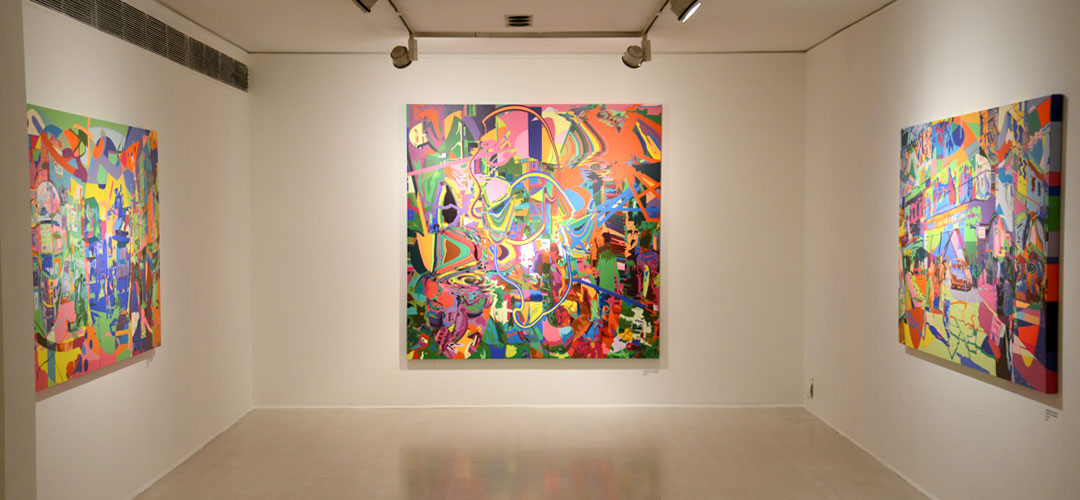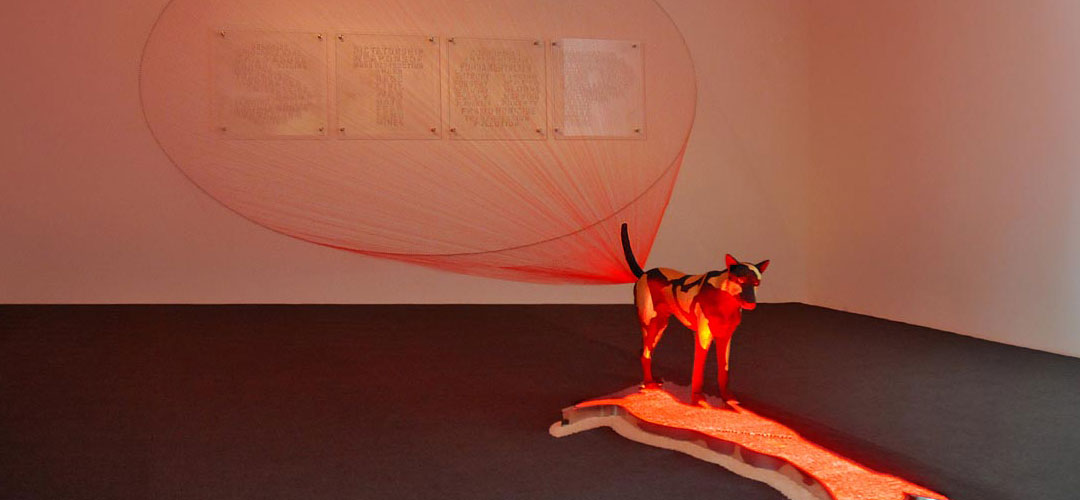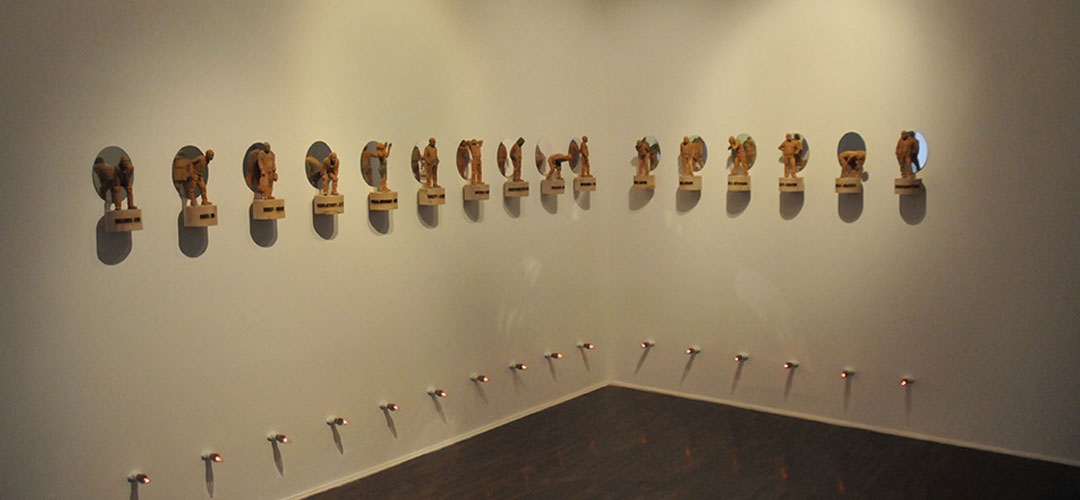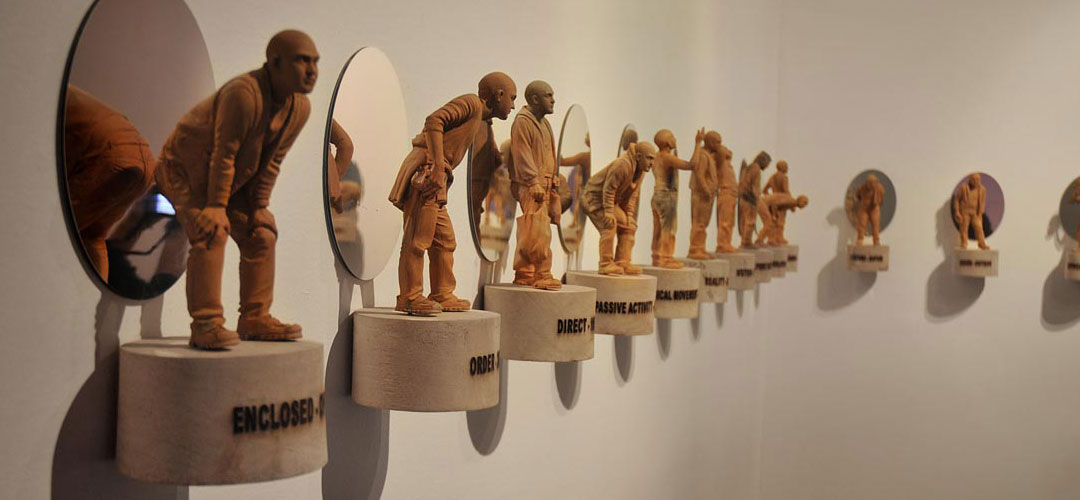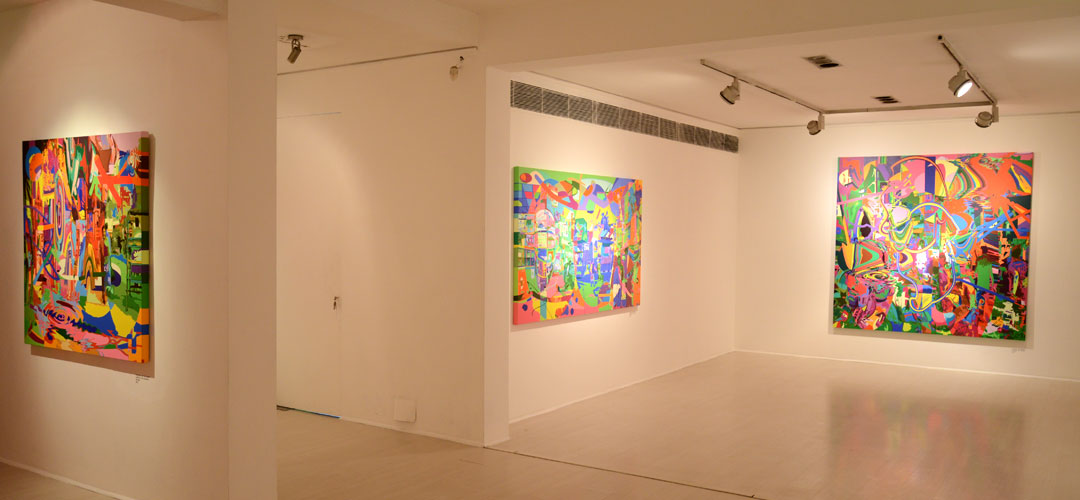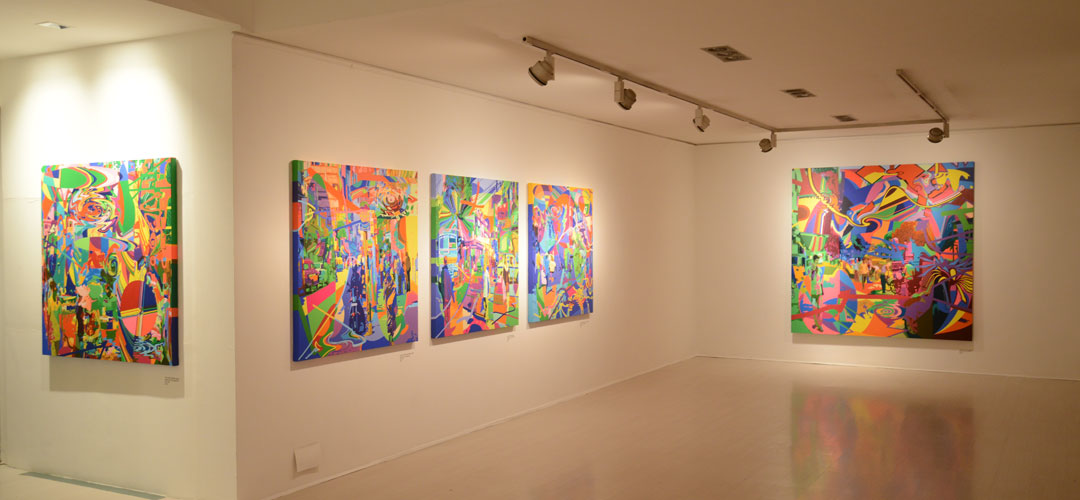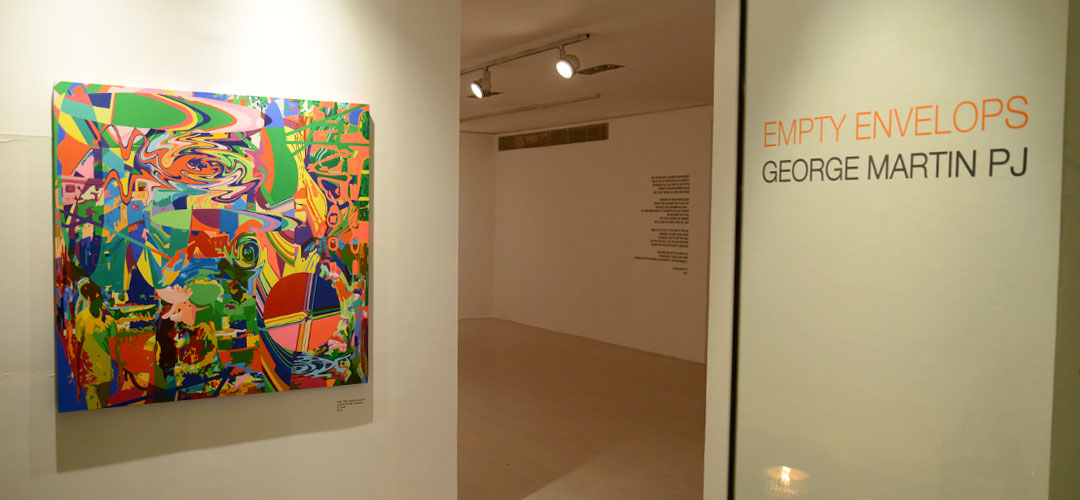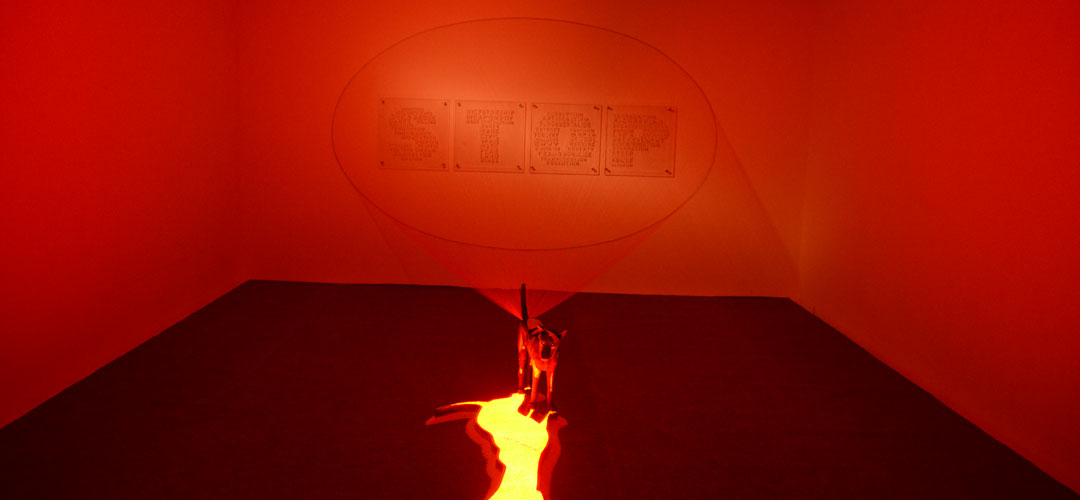Description
What is commonest, cheapest, nearest, easiest, is Me
I sing the body electric,
The armies of those I love engirth me and I engirth them,
They will not let me off till I go with them, respond to them,
And discorrupt them, and charge them full with the charge of the soul.
— Walt Whitman, I Sing the Body Electric
A quick run through the history of art reveal how the body has been used as canvas for artists to investigate socio-political issues, gender differences and their implications, personal reflection, life and death, human curiosities and the mendacity of the everyday. The muddle in the mind is best reflected in the mundane medley of human postures.
The juxtaposition of these human forms in various modes of expression presents aesthetics and messages that allow for a gamut of enthused interpretations. Artist George Martin PJ’s new work, Tale of Time, is an original set of resonant images, which opens such possibilities.
Though it is not directly autobiographical, the set of models of a human being in different postures attempts to posit the disengaged mode of human existence before the viewer, wherein the viewer is engulfed by a sense of fear, angst and false sense of mental escape, within and without. It is an abject personification of an endless Leviathan torment.
In his essay, Being Francesco Clement, Salman Rushdie argues that our faces possess a sovereign individuality. “We all carry within ourselves,” he says, “self portraits that are, for the most part, portraits of our faces, though there must be, there are cases in which we, some of us, whom see our selves in other parts of our bodies; a muscleman’s self-image may be a picture of a bicep, a dancer may see herself as existing most fully in her feet, a gigolo in his genitalia, or a pianist in his hands”. The posture that the body assumes in a given moment/situation/environment is a true reflection of the self. It could be a constant test of character and the perfect model for portraiture.
In the set of 16 models Martin presents the variations of the same theme: morbid human existence. He uses the language of gestures and postures to reveal their varied role in the construction of physical utterances and mental equilibrium or, as alternate, the absolute absence of it.
It is true that the body’s actions, consciously and unconsciously, reflect its mental state. In his seminal book, Gesture: Visible Action as Utterance, author Adam Kendon says that willingly or not, humans, in co-presence continuously inform one another about their intentions, interests, feelings and ideas by means of visible bodily action. “How people arrange their bodies and how they orient them and place them in relation to each other or to features in the environment, provides information about how they are engaged with one another and about the nature of their intentions and attitudes. Activities in which objects in the environment are manipulated, modified or rearranged are indispensable for grasping a person’s aims, goals and interests.” He emphasizes that it is equally pertinent that we take note of actions that are purely seen to be expressive. “Here we find the configurations of action in the face and the body that appears as displays of feeling and emotion, as well as actions that often play a central role in the accomplishment of important moments in social interaction.” It is in this context and the subtext that accompanies Martin’s ‘timeless tale’ that we notice that greeting, showing gratitude or affection, challenge, threat, submission, pleading, grief, compliance and resistance, all are accomplished through a range of expressive actions, which in turn are manipulated or forced upon us by the space we occupy and the unexpected and unsolicited events that confront us in our daily lives, particularly as situated in an urban milieu.
The body language depicted here strikes you as distinctive, particularly when seen together with the reflection in the mirror placed behind each of the models perched on the wall. Yet as you spend more time with the set of models you realize it is more universal than unique. It is an enactment of semiotics that has been determined by the human experience. One, perhaps, the author, has been
Subject to familiarise himself with in the course of his life in a metropolis bursting at its seams. All postures which he displays his 16 models in are underlined by an underlying subtext assigned to each one.
This is how they go: Enclosed-Open says one below the model of man bent with his hands on his knees reminding one of the Austrian writer Peter Handke’s 1970 novel The Goalie’s Anxiety at the Penalty Kick; Objective-Subjective says another showing the model examining his perception of reality; Direct-Indirect is the caption that goes with the one in which the same man is seen walking with a bag in his hand; Passive Activity-Active Activity is what is inscribed below another model, once again with his hands on his knees like a fielder on the cricketing field stationed at cover point waiting for the ball to come his way; Physical Movement-Mental Movement says the one in which the model is in a state of invocation, tired and forlorn, Inside-Outside is the one in which there is a tinge of suspicion–the model holding a book being a perfect giveaway, Activity-Creation is the label that goes with a model that stands with his hands on his hips perhaps assessing all that is done and awaiting all that needs to be done, Intuition-Planning is almost ‘Hitchcockian’ — the model like Hitchcock is wondering whether the original of his film The Man Who Knew Too Much made in 1934 is better than the later 1956 film of the same name; Reality-Conception goes with a model who betrays a feeling of rare self-confidence; Isolation-Association goes with the one in which the model seems to be caught in a moment where the referee of a tennis match has to ascertain whether the ball has landed on the line or outside or is on the line, Culture-Nature is what describes the model that looks like a typically cynical Malayalee who holds everything around him with circumspection and Approach-Withdrawal is the title that goes with the man who is hiding his face perhaps in shame reminding you of the eternal Jungian line: ‘Shame is a soul eating emotion’. Decreasing-Increasing, Order-Chaos and Single-point Reference-Open Field are the other captions that describe the state of minds of the models in question. All subtitles demarcate the confused state that the human mind is in when confronted with contradictions or modern life’s surreal paradoxes. In the aforementioned essay on artist Clemente, Salman Rushdie recalls a scene from Spike Jonze’s 1999 film Being John Malkovich in which, “in the actor’s interior universe, all of reality has been Malkoviched, all faces are Malkovich’s face, and the only word in the only known language is ‘Malkovich’.” Something similar is happening here in Martin’s work, which comes across as ironic and ends being satirical—satyrironic. It is a language which extrapolates upon the blade of grass that the first of the series alludes to. In all the varying postures, and in all situations, there is only one person: ‘the blade of grass that I am’.
Martin also examines how the space we occupy or have been pushed into also has a bearing on the way we gesticulate or adjust the shape of our torso, like in the model caught in the middle of his gait or the one bent forward as if waiting to receive a flogging. These images are as much a reflection of the human condition as much as they speak about the conditions humankind has been forced into. It is a social act that the space asks of him or requires him to prepare for.
“A creature that hides and “withdraws into its shell,” is preparing a “way out.” This is true of the entire scale of metaphors, from the resurrection of a man in his grave, to the sudden outburst of one who has long been silent. If we remain at the heart of the image under consideration, we have the impression that, by staying in the motionlessness of its shell, the creature is preparing temporal explosions, not to say whirlwinds, of being.”
—Gaston Bachelard, The Poetics of Space
It is a distance that his body acquires by way of his gesture, physical utterances and posture in relation with where he is and/or who he is with. Anthropologist Edward T. Hall described four levels of social distance that occur in different situations: intimate distance, personal distance, social distance and public distance. According to him, intimate distance indicates a closer relationship or greater comfort between individuals. It often occurs during intimate contact such as hugging, whispering, or touching. Personal distance usually occurs between people who are family members or close friends. The closer the people can comfortably stand while interacting can be an indicator of the intimacy of the relationship. Social distance often used with individuals who are acquaintances. Public distance is often used in public situations, depending on whether they are favourable or adverse. You can see a careful and conscious underplay of these distances in Martin’s work, in which, though motionless, the models are reacting to their loci as much as they are reacting to the state they are in. It is a recollection of the past and an anticipation of the future stated in the present. A tale of time told in a medium that is a faint reminder of the fact that ‘for dust thou art, and unto dust shalt thou return.’ Perched about five feet above the floor with only flickering lamp-like bulbs in between, the set of models is a caveat about the fragility of the much coveted genesis of existence. It is an imagery that can only be recast as a join-the-dots exercise of putting together remembrances or even experiences. If not, the full portrait doesn’t fall into place. “In the theater of the past that is constituted by memory, says Gaston Bachelard in his Poetics of Space, “the stage setting maintains the characters in their dominant roles … And if we want to go beyond history, or even, while remaining in history, detach from our own history the always too contingent history of the persons who have encumbered it, we realize that the calendars of our lives can only be established in its imagery.” It is this calendar of lives that reverberates through each of Martin’s 16 models that narrates a tale of time.
Individually, when seen separately, each of these models would have been found wanting in conveying what Martin intended, nuances of which are articulated in a poem that was part of the show:
Life rises and settles everyday
Forgive me, it can be only mine
Nothing can be explained,
All we know is the appearance!
Manoj Nair
2014
Details
Show Date
Nov 27, 2013 - 15 Jan, 2014
Venue
Palette Art Gallery, New Delhi, India
Content
Two sculptural installations and Eleven Paintings
Sculpture
The day I became a critic
Tale of time
Paintings
1. Half open doors
Acrylic on canvas, 48”x48”, 2013
2. Steel nibs are sprouting
Acrylic on canvas, 48”x48”, 2013
3. A glimps of greatness
Acrylic on canvas, 48”x48”, 2013
4. Screaming the public sphere
Acrylic on canvas, 48”x48”, 2013
5. The two sided nails
Acrylic on canvas, 48”x48”, 2013
6. The way of the knife
Acrylic on canvas, 48”x48”, 2013
7. Beyond billion ballots
Acrylic on canvas, 48’’x84’’, 2013
8. Forbidden lessons
Acrylic on canvas, 48’’x84’’, 2013
9. The rhetoric of dissent
Acrylic on canvas, 48’’x84’’, 2013
10. Violent belonging
Acrylic on canvas, 78’’x78’’, 2013
11. Amplified monuments
Acrylic on canvas, 78”x78”, 2013
